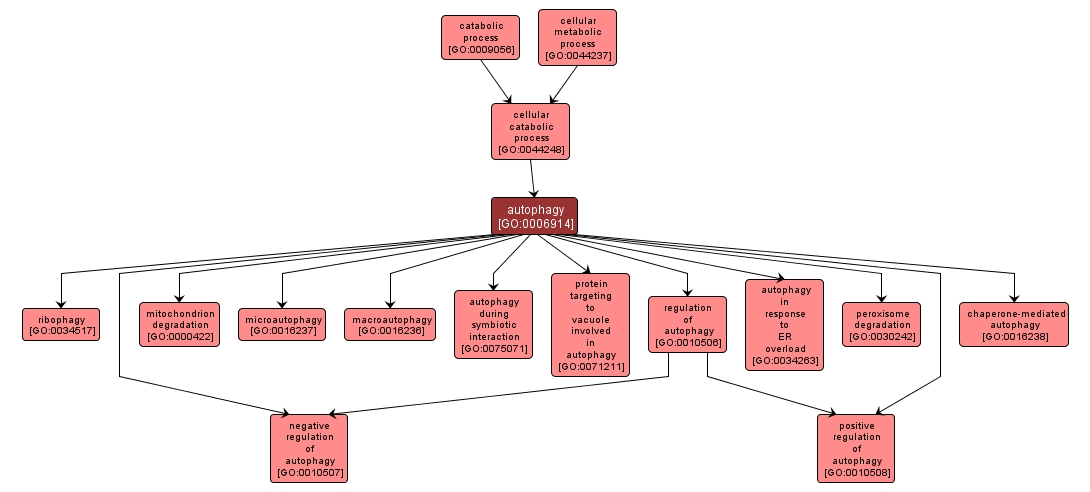GO TERM SUMMARY
|
| Name: |
autophagy |
| Acc: |
GO:0006914 |
| Aspect: |
Biological Process |
| Desc: |
The process by which cells digest parts of their own cytoplasm; allows for both recycling of macromolecular constituents under conditions of cellular stress and remodeling the intracellular structure for cell differentiation. |
|

|
INTERACTIVE GO GRAPH
|














